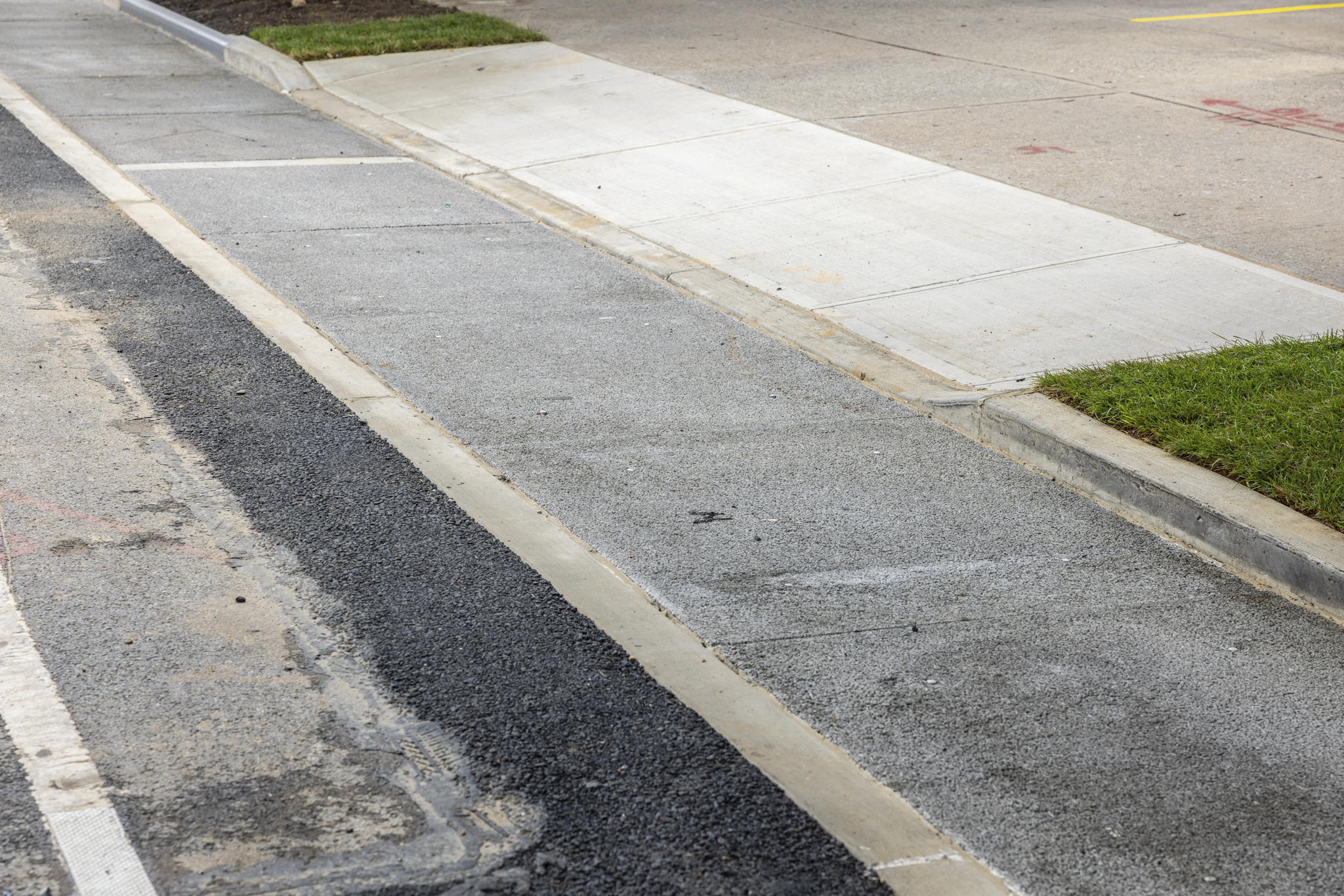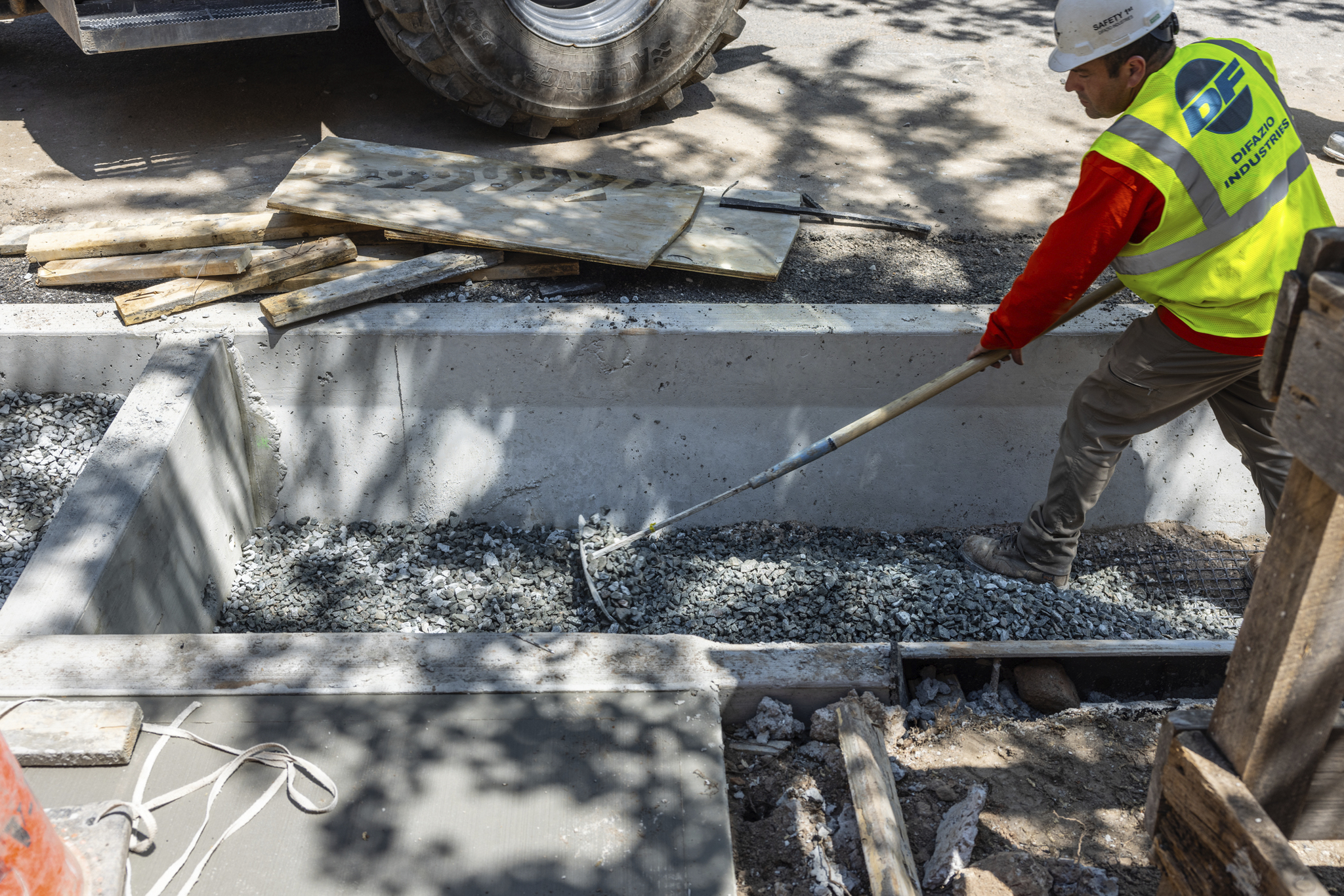
 Department of Design and Construction311
Department of Design and Construction311 Search all NYC.gov websites
Search all NYC.gov websites
Porous Pavement
The warming climate is causing sea levels to rise and storms to worsen, and this had led to more frequent flooding with more damaging effects throughout New York City. DDC is working on several projects that will help the City counter this issue, such as our coastal resiliency projects in Manhattan and Brooklyn. One of our main methods of reducing flooding is through the construction of green infrastructure, which DDC is working alongside the Department of Environmental Protection (DEP) to build.
Green infrastructure is a network of infrastructure that collects stormwater from streets and other hard surfaces and allows it to be absorbed naturally. By keeping stormwater from reaching the catch basins that lead to the City’s sewer system, the likelihood of the sewers themselves overflowing is drastically reduced. Green infrastructure also helps to keep temperatures down during hot weather and reduces the amount pollution that reaches our waterways. There are many types of green infrastructure including rain gardens, green and blue roofs, and porous pavement.
Porous pavement allows stormwater to be naturally absorbed into the ground, rather than pooling on the street or flowing into the sewer system. The pavement itself is mixed without the smaller aggregate present in traditional pavement, and liquid can easily pass through the holes in the larger aggregate. This helps to prevent flooding and reduces the chance of icy conditions forming on the road. Despite the difference in permeability, porous pavement can be walked on, parked on, or driven over without issue.

To install the pavement, the City first needs to identify a suitable location where the soil can absorb the stormwater. For that reason, you might see workers in your neighborhood testing the soil or marking a location with green spray paint for future work. Even if the soil in a particular area does prove adequate, there are other factors that prevent the installation of porous pavement, such as conflicts with sewer pipes or private infrastructure. You can find a map of the currently planned green infrastructure installations, including porous pavement, throughout the City on DEP’s website.
Once a location is chosen and properly tested, workers begin the porous pavement installation by removing the existing traditional asphalt and then excavating a hole two feet deep. The hole is then backfilled with stone and the permeable pavement is placed on the top level. The newly installed permeable pavement allows stormwater to trickle down past the stone and be absorbed by the soil.

If a portion of the street near your residence or business is selected for porous pavement, you’ll receive word from a community construction liaison providing more information about the installation. DDC will work to ensure any disruptions caused by the construction are minimal, though there may be a brief disruption to parking space during the installation.
Porous pavement is just one part of our expanding network of green infrastructure, and green infrastructure itself is just one component of New York City’s efforts to neutralize the effects of climate change. DDC and its partner agencies are keenly aware of the dangers that flooding poses to New Yorkers, and we will continue finding ways to protect residents and businesses from unsafe conditions and potential damage.


